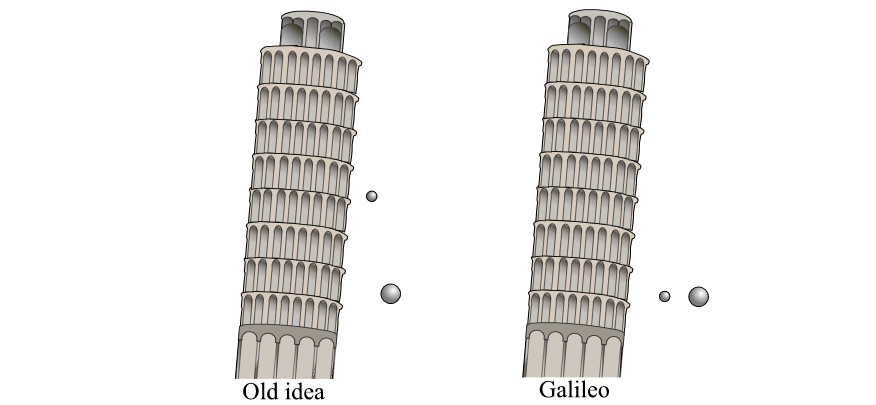
We can argue that Newton’s 1st law is implied by Newton’s 2nd law, so it is really not needed. The 1st law is a simple case of the 2nd law when force is zero. Perhaps the 1st law is there to set the scene for the second law ...
The second law is really quite complicated compare to the first law. It goes like this :
“The rate of change of momentum of a body is proportional to the resultant force acting on it.”
It does not look much longer than the first law :
“A body in motion would remain in motion unless a force caused it to come to rest. ”
But that is deceptive. Almost every word in the 2nd law is packed with meanings :
- rate of change
- momentum
- proportional
- resultant
Taken together, questions on the second law can become quite confusing to students. These meanings would take an O and A level students many months to get right, through lots of exercises on physics questions.
It really takes a proper chapter in A level physics textbook to explain all these. But then this article is about origins. So it would be a lot simpler. Phew !
So does Newton’s second law not originate from Newton?
Not entirely. The basic ideas of the second law was discovered before Newton. Guess who discovered those ideas?
Galileo !
You might have guessed it was him if you have read my earlier article on Newton’s first law. But I was quite surprised when I found this on Google.
I guess not many people are aware of this, though as I shall explain, it makes sense if you are familiar with Galileo’s experiments on the Tower of Pisa and the inclined plane.
Today, we learn about these two experiments as examples that can be explained by Newton’s second law. So what did Galileo discover about the ideas about Newton’s second law from these two experiments?
I found an article that describes this quite well : http://galileoandeinstein.phys.virginia.edu/lectures/gal_accn96.htm
This article summarises some parts of Galileo’s book “Two New Sciences”. It mentions Aristotle’s view on falling objects - “that the speed of fall was proportional to the weight”.
This is likely the view of most people today who have not studied physics, and maybe even some students who had. Galileo’s wrote the book as a conversation between 3 persons – Simplicio who is simple minded, Salviati and Sagredo who are clever.
The part of interest to this article is this statement by Salviati :
“But I, Simplicio, who have made the test, can assure you that a cannon ball weighing one or two hundred pounds, or even more, will not reach the ground by as much as a span ahead of a musket ball weighing only half a pound, provided both are dropped from a height of 200 cubits.”
This sounds just like Galileo’s Tower of Pisa experiment where he dropped his two balls !
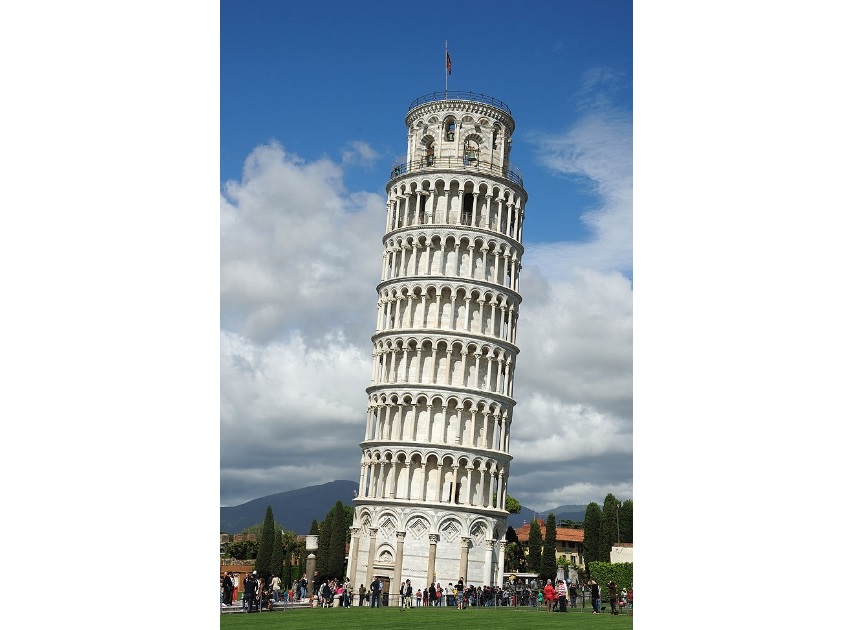
But whatever accounts I have read in books and Google all said that the story of Galileo dropping his balls from the top of the Tower of Pisa is just a story. It never happened.
However, having studied physics and done experiments much of my life, it seems clear to me that Galileo could not have made this up. His account contains details that we can verify even today by experiments.
Galileo even quoted a height - 200 cubits. I googled the conversion and calculated that it is about 91 metres. I looked up the Wikipedia on Tower of Pisa – it is 57 m tall. Too short. Yeah, the Pisa story is probably not real.
And then I looked up heights of towers in medieval Italy. This is one of the tallest :
“Between the 12th and the 13th century, Bologna was a city full of towers. Almost all the towers were tall (the highest being 97m), … … Fewer than twenty towers can still be seen in today's Bologna. Among the remaining ones are … , and the famous Two Towers: the Asinelli Tower (97 m) and the Garisenda Tower (48 m).” (Wikipedia - Towers of Bologna )
The Asinelli Tower. About 200 cubits tall. It still stands today.
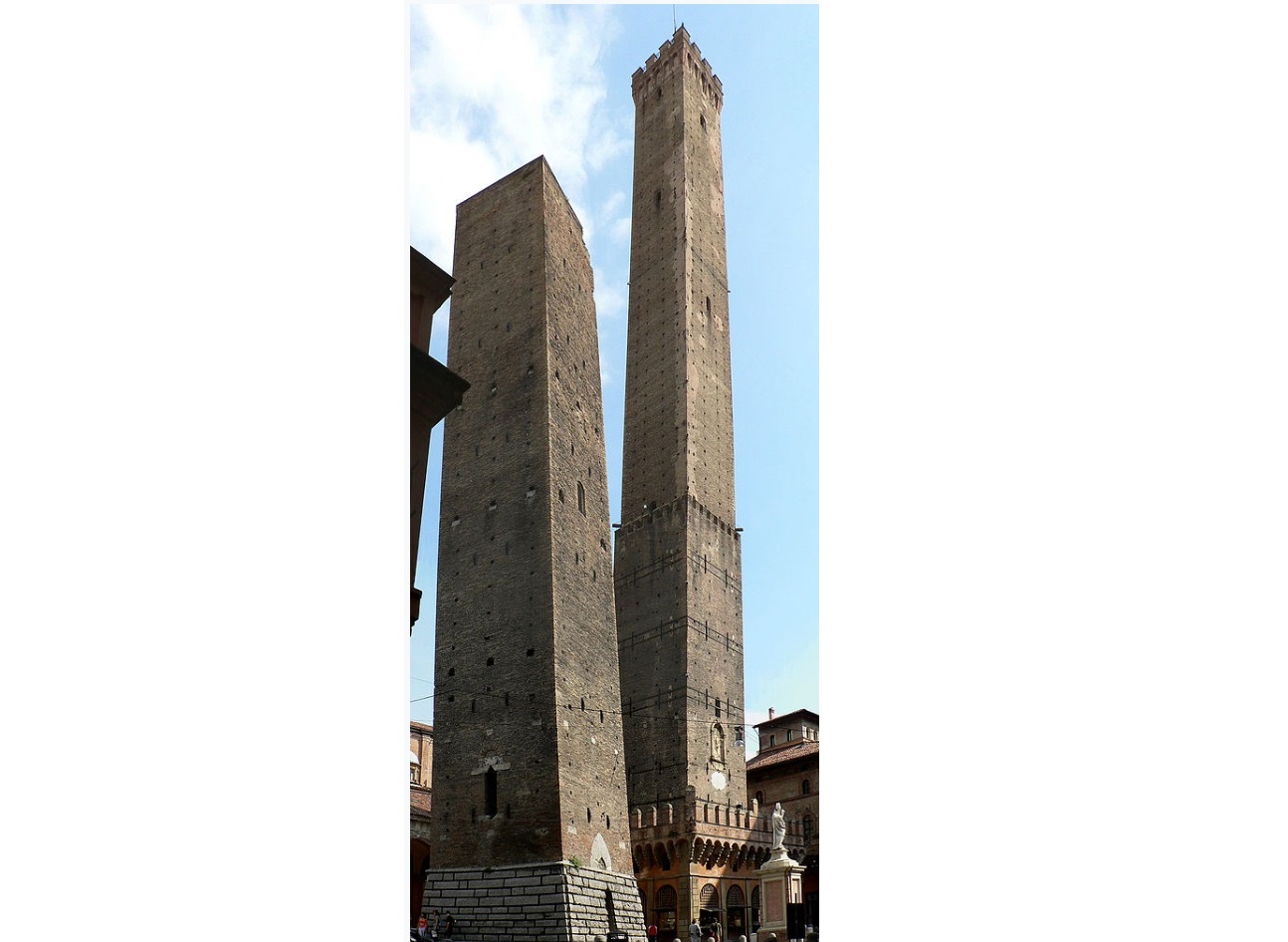
Wikipedia says that Galileo lived in Pisa, which might be why the Tower of Pisa story started. Google map tells us that Bologna is about 100 km from Pisa.
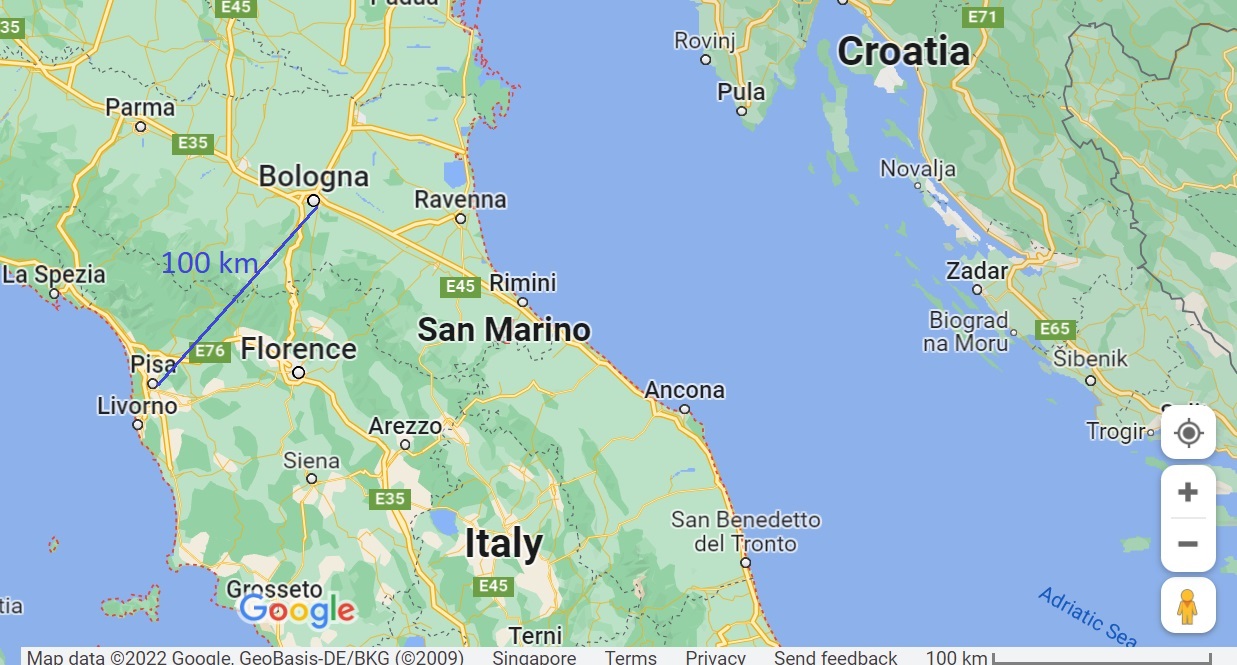
A Google search suggests that a horse carriage can go as fast as 10 miles per hour. This could take Galileo to Bologna in 6 – 7 hours. If he started early, he could have made it back home for dinner. But of course the road could not have been a straight line …
From the above facts, there is a good chance that Galileo actually dropped his balls from the top of Tower of Asinelli. Or maybe asked someone to do it for him. But this tower is not tilted, so it would not make such a good story as the leaning one at Pisa …
Anyway, from experiments we can do today, we can also confirm Galileo’s observation. But what has this got to do with Newton’s second law ?
“The rate of change of momentum of a body is proportional to the resultant force acting on it.”
The 2nd law is related to Galileo’s balls through the word “momentum” :
Momentum = (mass of the body) × (its velocity)
We can just imagine that the big ball is made up of many smaller balls, each one the same size as the small ball. If we imagine that the bigger ball is like 10 small balls together, then the weight is also 10 times the small ball.
But each small ball in the big ball is just like the single small ball. Every small ball would fall at the same rate. In this way, Newton’s second law can explain why Galileo’s big and small balls reach the ground at the same time.
But no matter how reasonable these reasonings are, they are still reasonings. That is - it is just what we think. If a picture is worth 1000 words, then in science - a demonstration is worth 10,000 words. And a good demonstration ?
Apollo 15 Commander Dave Scott's showed on the moon showed that when there is no air, the hammer and stone that he dropped hit the ground at the same time !
But this only shows that the part related to mass in the “momentum” in Newton’s second law is correct. What about the velocity part ?
Consider the single ball. If the force is bigger, the velocity part of the momentum would also have a bigger rate of change. “Rate of change of velocity” is about how much the velocity changes with time. This means acceleration, or deceleration.
From Newton’s second law – for the same force – in this case the weight - the acceleration would stay the same as time passes. This means the velocity would increase by the same amount every second.
This has the same meaning as what Galileo said in his book :
“A falling body accelerates uniformly: it picks up equal amounts of speed in equal time intervals, so that, if it falls from rest, it is moving twice as fast after two seconds as it was moving after one second, and moving three times as fast after three seconds as it was after one second.”
This is a very specific way that it changes. How can we check that by experiment ? Falling objects fall too fast. Today, we can check with electronic sensors and computers. How did Galileo check this ?
Once again, Galileo found a way.
https://en.wikipedia.org/wiki/Galileo%27s_law_of_odd_numbers
He calculated that if a ball increases speed by the same amount after every second, then then distance increases by a number of times that follow the sequence of odd numbers.
For example, if the ball moves 1 m in the first second, then it will move 3 m in the next second, then 5 m, 7 m, and so on. If instead it moves 0.5 m, then the following seconds would be 1.5 m, 2.5 m, 3.5 m, … - always multiplied by the same odd numbers.
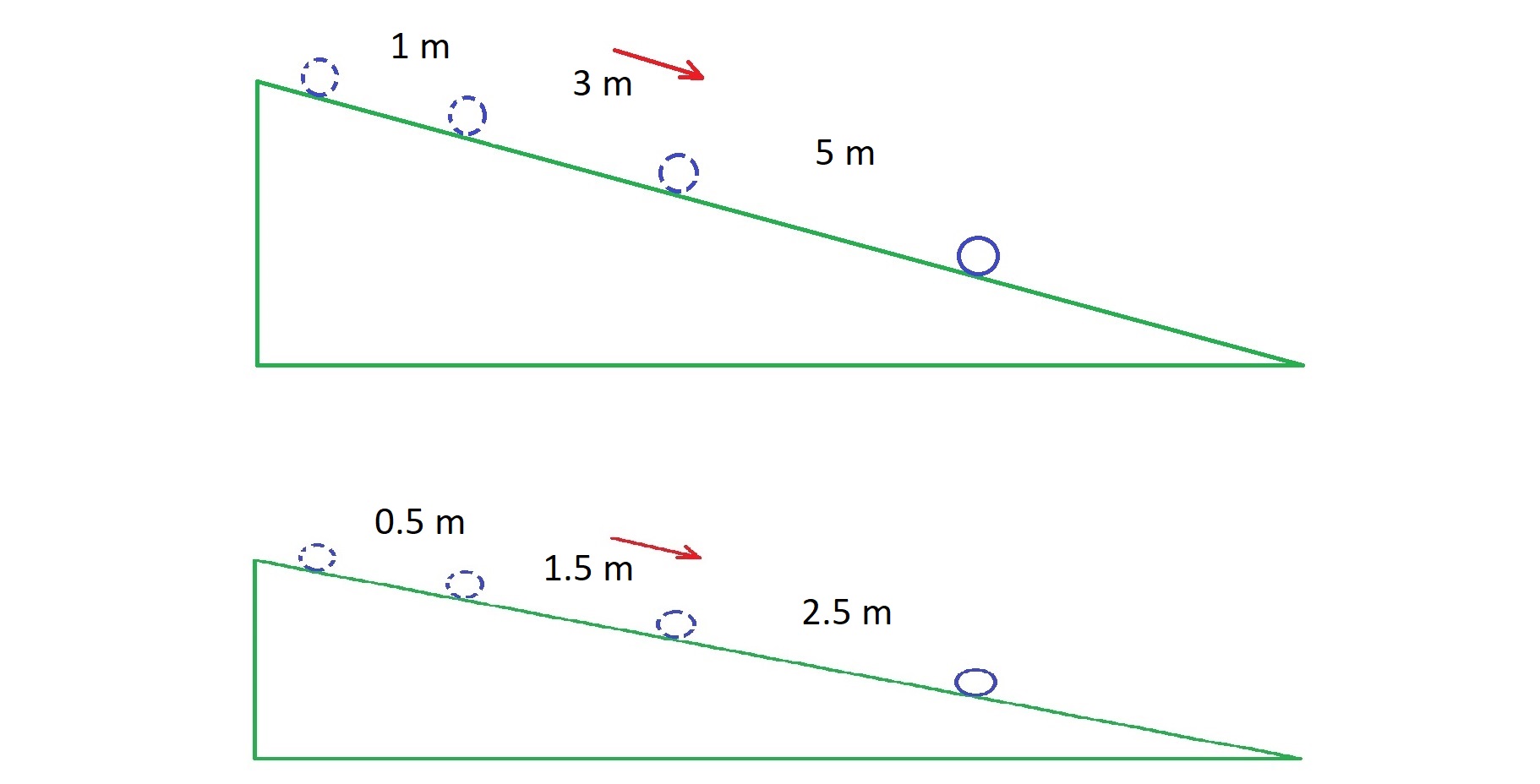
Students who study physics in Singapore would learn to do this calculation in Sec 3.
So Galileo thought that this is the simplest kind of acceleration, and he wanted to check this by experiment – to measure a falling object.
This is not easy as things fall really quickly. Before you can blink your eyes, a ball could have fallen a few metres. And Galileo did not have any electronic sensors back then. Even today, you need to spend time learning some electronics before you can set up such an experiment.
So Galileo came up with a clever idea – he used an inclined plane to slow down the fall of the ball.
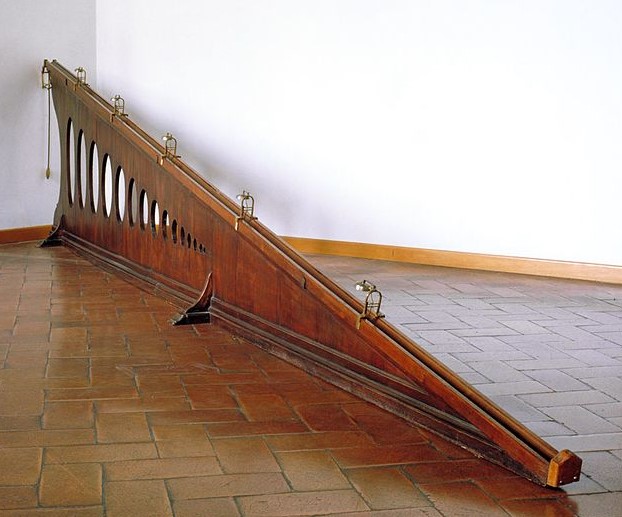
To make it easier to measure time, he put some things along the way that would make some sound when the ball rolled past them. Like a small hump or bell that hopefully does not slow the ball much.
He would adjust their positions so he hear the sounds at regular intervals. Then he can just measure the total time.
And so he must have confirmed that the distance between humps followed the law of odd numbers, and therefore that the ball is uniformly accelerated.
In summary, Galileo found that :
1. If mass of a body and force acting on it are increased the same number of times, like the big ball relative to the small ball in the balls dropping experiment, the acceleration stays the same.
2. If a constant force is applied to a body, then the acceleration would stay the same as it moves.
These 2 statements contain the main ideas in Newton's second law. Apart from Galileo there were also other scientists in those working on these topics.
We can for example deduce from these that if we increase the mass without increasing the force, then acceleration would decrease. This leads to the O level version of Newton's second law :
force is proportional to mass times acceleraton.
The A level version stated above is more abstract :
“The rate of change of momentum of a body is proportional to the resultant force acting on it.”
Momentum = mass x velocity
This momentum quantity turns out to be very useful, particularly in relation to Newton's third law. I shall talk about this in later articles.
I shall finish off with a mention that this "momentum" idea seems to he invented by yet another person called Descartes. Same guy who invented calculus at about the same time as Newton.
But that is another story.
You can learn these concepts and more at Dr Hock's maths and physics tuition.